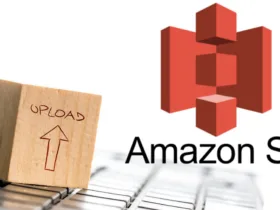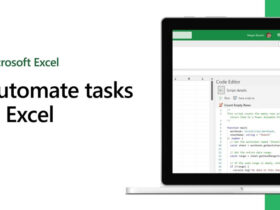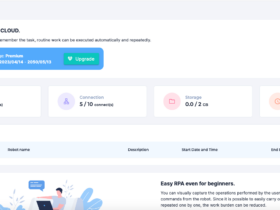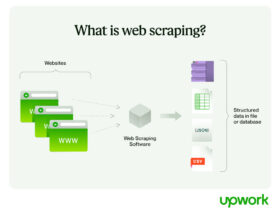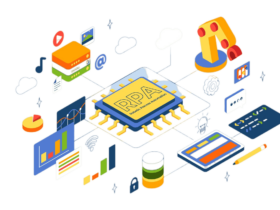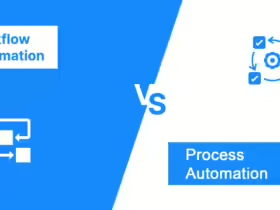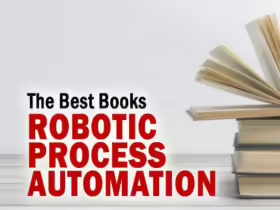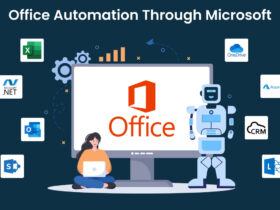The world of technology changes rapidly, requiring businesses to adapt and apply advanced automation systems. The benefits of office automation are undeniable, bringing outstanding efficiency to administrative activities and promoting business productivity.
According to research, more than 80% of organizational leaders have applied automation and promoted remote working models. This shows the importance of office automation systems in optimizing profits and improving operational efficiency.
As a business leader, it is your responsibility to evaluate the efficiency of your current processes and apply the right automation solution. Integrating advanced office automation tools will help you automate manual tasks, improve productivity, save costs, and enhance competitiveness.
Explore the potential of office automation and start your business’s digital transformation journey today!
What Is an Office Automation System?
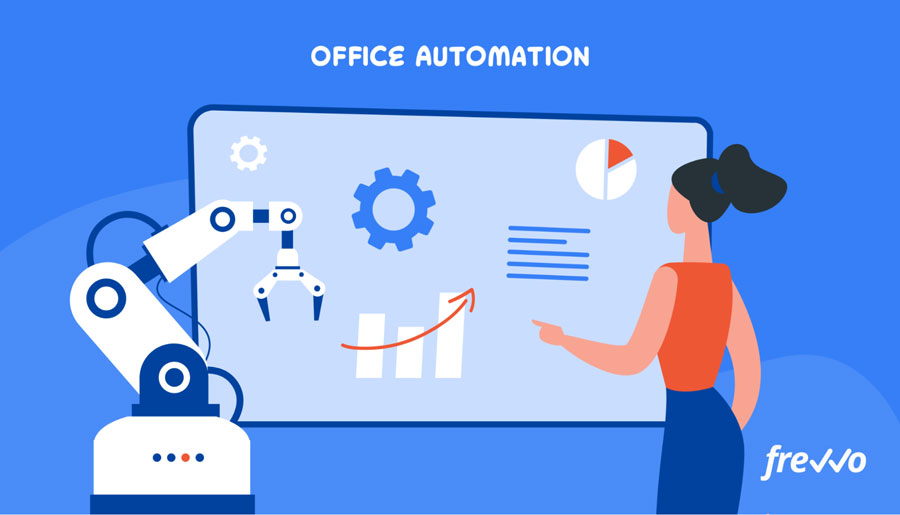
Office automation systems play an important role in promoting business performance. This system works by automatically collecting, organizing, storing, checking, and distributing data between different systems, helping to solve repetitive tasks accurately and efficiently. As a result, office automation systems eliminate the need for manual human intervention, ensuring a seamless and error-free data flow.
The highlight of the office automation system is its ability to simplify office workflows, thereby optimizing operational productivity. The system uses advanced hardware and software solutions to automate tasks such as document processing, email management, reporting, and more.
Thanks to this, office workers will save significant time and effort, allowing them to focus on tasks that require more expertise, bringing greater value to the business.
Why Should You Use Office Automation?
Office automation improves operational efficiency and unleashes employee potential, allowing them to focus on higher-value work. Thanks to the development of artificial intelligence (AI), office automation is becoming smarter and more efficient, bringing benefits to all sizes of businesses.
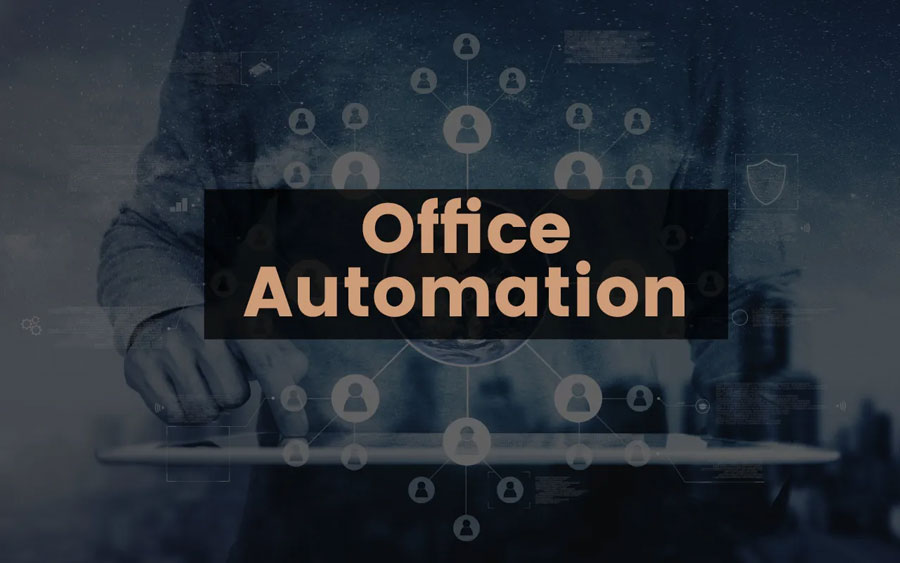
Many businesses have been successfully applying automation to increase productivity. Therefore, participating in this trend is essential so that your business does not fall behind.
However, the way automation is applied will depend on the characteristics and goals of each business. Ask yourself the following questions to determine the right direction:
- What manual processes are hindering and slowing down work progress?
- How does automation help improve these processes?
- Which automation tool best fits your business needs?
Start by evaluating your internal processes and identifying time-consuming but low-value tasks. These are the first goals you should aim for automation.
What Are the Benefits of Office Automation?
Office automation transforms the way businesses operate. Here are the advantages of office automation:
Increase Accuracy
People make mistakes, but automated systems don’t (when done right). Human errors cost time and money. Think of typing an extra digit when paying someone – that’s money lost! Worse yet, mistakes can lead to security issues and hefty fines.
Automation protects your business. When you automate data transfer, there’s less chance of human error. Information gets where it needs to go accurately and on time.
Improve Security

Office automation systems boost your security. They protect against threats from inside and outside your business. Plus, they can automatically back up your important data, so you’re always prepared if something unexpected happens.
With the right cloud-based features, your sensitive information is safe. Think of it like a digital vault for your company’s data, guarded against prying eyes and always accessible when you need it.
Decrease Resources and Time
Automation lets your team do more with less. By getting rid of boring, repetitive tasks, employees have more time to focus on what truly matters. Think of all that time saved on paperwork – no more hunting for documents, typing in the same information over and over, or endlessly filing things away. The system handles it!
This isn’t just a feeling – 78% of leaders agree that automation gives their teams back three whole hours every day! Imagine what your people could achieve with that extra time.
Focus Data Access Tool
Automation helps you build a powerful, cloud-based hub for all your data. It connects seamlessly to your existing database, giving your whole team easy and secure access to the information they need.
No more data silos or slowdowns. With this centralized platform, everyone can find and share information quickly, leading to faster decisions and smoother collaboration.
Organize Tasks
Office automation software is like a superpower for getting rid of time-wasting, boring tasks. It transforms chaos into organized workflows, giving your team back precious hours.
With those extra hours, your people can focus on the truly important work. This means they can be more creative, solve problems, and drive the business forward.
Create an Innovative Culture
Sticking with old, manual ways of doing things creates a “good enough is good enough” attitude. This helps your business achieve the best average results.
Instead, challenge your team to find a better solution! This problem-solving mindset sparks innovation. Over time, your team will find smarter ways to work that directly benefit the people you serve.
Automate Repetitive Tasks
The gap between a business stuck with manual processes and one that embraces automation is not just a little different, it’s huge! With manual tasks, you’re constantly spinning your wheels, duplicating data, and wasting valuable time.
An automated business saves all that time and energy. Those resources can be put back into projects that are truly decisive for your company. This creates a powerful cycle of improvement, leading to long-term success.
Main Features of Office Automation
Finding the perfect office automation system can feel overwhelming – there are so many choices! But, as technology improves, there are a few must-have features to look for. Here’s your essential checklist:
Mobile Access
You don’t have to sit in front of your desk for dozens of hours straight! A great office automation tool that puts your work in your pocket. Manage your workflow from anywhere, anytime, with easy mobile access – no more delays just because you’re away from your computer.
The best automation tools are designed for today’s on-the-go lifestyle. Work shouldn’t stop while you work – it should simply move with you.
Build Easy Workflow Design

Going digital alone is not enough. The real transformation comes from automation. That’s why modern office automation tools give you the ability to design custom workflows that fit exactly how your team operates.
Take RPA Cloud, for example. This no-code platform allows anyone to build automated workflows to streamline tasks and increase productivity. It’s about working smarter, not just using technology to solve problems.
Work with Other Applications
An office automation tool should make your life easier, not create more work. If it doesn’t work well with other apps you already use, you’re just creating new problems instead of solving existing ones.
The best office management tools integrate seamlessly with everything else. All your project updates, customer data, and accounting records will come together easily. That’s the real power of automation!
Access Control Management
The core purpose of access control is to protect your sensitive data. Your workflow system must provide granular control over who can view and change information at each step of the process. This ensures that data is secure and only accessed by those who truly need it.
Task Management
A great office automation tool that makes task management a breeze. You’ll be able to easily organize, prioritize, and track progress on all your tasks. Seamless collaboration with teammates is also key, ensuring everyone stays on the same page and projects progress smoothly.
Examples of Office Automation System
Office automation transforms how businesses work. It offers tools to enhance efficiency in areas like:
Sales and Customer
Customer success automation is all about using tools to make your customer interactions smoother and more effective. It works hand-in-hand with your existing customer relationship management (CRM) platforms, like Salesforce or HubSpot.
No matter where a customer is in their journey – from the initial welcome to renewals and growth opportunities – automation can help. It streamlines everything, making your team more efficient and proactive.
For example, imagine a new customer signs a deal. As soon as their status is updated in your CRM, automation kicks off the onboarding process. This means personalized emails, helpful resources, and everything else to get them started on the right foot – all without manual work.
Legal
Technology is revolutionizing the legal field! From AI assistants to specialized document tools, automation is streamlining a wide range of legal tasks.
One exciting area is Contract AI. Platforms like Juro use AI to draft, analyze, and review contracts with incredible speed and accuracy. This frees up lawyers from tedious drafting work, giving them more time for high-value strategic thinking.
Legal automation extends beyond contracts. Systems like Carta streamline equity management, simplifying complex ownership structures. The benefits are clear: increased productivity, reduced errors, and the chance for lawyers to focus on what they do best.
Marketing

Marketing automation is a game-changer, and the numbers prove it: 86% of marketers report better lead quality thanks to automation tools. These tools take the tedium out of email campaigns, social media scheduling, and even complex ad management.
Primarily, marketing automation powers your inbound efforts across multiple channels. It lets you track customer behavior, personalize interactions, and streamline processes for maximum impact.
Data-driven automation helps you overcome common marketing hurdles. Now, instead of manually juggling multiple platforms, you can nurture leads with targeted, relevant content at the right time.
Automation gives marketers back their most precious resource: time. Time for brainstorming, strategizing, and focusing on the big-picture ideas that truly drive growth.
Data
Data automation software is an extremely important factor for any business department! It eliminates the need for manual data entry, analysis, and processing – all thanks to intelligent algorithms and tools.
With data automation, your organization will gain speed, accuracy, and scalability. Data flows quickly between departments, giving you trusted insights to make the best decisions possible.
One of the prominent tools for this field is Microsoft Power Automate. It allows you to easily create automated workflows to connect different applications and services. Because it’s cloud-based, it adjusts as your needs grow, and it works well with other Microsoft tools you might already use.
Office Operations
Office automation has infiltrated every aspect of how we work. Think about it: from digital timesheets and those keycards you swipe to enter the building, your day is full of automated processes. Even your employee records are likely connected to HR automation software, streamlining tasks behind the scenes.
This isn’t just about convenience. Companies like Juro even use their own AI-powered contract management software for employee agreements. Automating these routine tasks saves a tremendous amount of time, letting businesses focus on what truly matters.
FAQs: Office Automation
What Are Types of Office Automation?
Office automation appears in many different ways to meet the needs of every business model. It powers your email communications, helps you manage and organize documents, enables seamless collaboration between team members, and streamlines administrative tasks across departments like HR and finance.
What Are Types of Automation?
Automation appears across many different industries and tasks to be able to meet everyone’s needs. The main types include industrial automation (like factory robots), business process automation (streamlining repetitive tasks), IT automation (technology systems management ), and office automation (increasing efficiency in regular office workflows).
What Are the Main Parts of Office Automation?
Office automation relies on a combination of tools. This includes computers running specialized software, smooth communication systems, secure data storage, and even familiar office equipment like printers. All these elements work together to make your workday more efficient and less of a hassle.
What Are the Purposes of Office Automation?
The core purpose of office automation is to streamline your workday. It targets tasks like communication, managing documents, and handling data, automating them for greater speed and accuracy. This frees up valuable time and minimizes the potential for human error, leading to a more productive and efficient office.
Don’t confuse automation with simply being digital. You need to identify the biggest obstacles in your operations. Is the way you do your job currently a problem? If it’s causing you difficulties, it’s time to upgrade your processes and take a serious look at office automation.
Here are some essential questions you need to ask yourself when evaluating tools:
- Does this directly fix the weakness we are facing?
- Is information easy to find and share?
- Does it cut down on duplicate data?
- Can the right people securely access what they need?
- Is it less likely to make mistakes?
- Will it integrate with our existing systems?


